I have a situation where sometimes, a whole series of data is not available. I'm real-time plotting values from sensors, and these can be turned on and off via user interaction, and thus I cannot be sure the values are always in a series. A user can start a sensor and later turn it off and on again, but In this case, matplotlib draws a line from the last end point and the new start point.
The data I plotted was as follows:
[[ 5. 22.57011604]
[ 6. 22.57408142]
[ 7. 22.56350136]
[ 8. 22.56394005]
[ 9. 22.56790352]
[ 10. 22.56451225]
[ 11. 22.56481743]
[ 12. 22.55789757]
#Missing x vals. Still plots straight line..
[ 29. 22.55654716]
[ 29. 22.56066513]
[ 30. 22.56110382]
[ 31. 22.55050468]
[ 32. 22.56550789]
[ 33. 22.56213379]
[ 34. 22.5588932 ]
[ 35. 22.54829407]
[ 35. 22.56697655]
[ 36. 22.56005478]
[ 37. 22.5568161 ]
[ 38. 22.54621696]
[ 39. 22.55033493]
[ 40. 22.55079269]
[ 41. 22.55475616]
[ 41. 22.54783821]
[ 42. 22.55195618]]
my plot function looks a lot simplified like this:
def plot(self, data)
for name, xy_dict in data.iteritems():
x_vals = xy_dict['x_values']
y_vals = xy_dict['y_values']
line_to_plot = xy_dict['line_number']
self.lines[line_to_plot].set_xdata(x_vals)
self.lines[line_to_plot].set_ydata(y_vals)
Does anyone know why it does like that? And do I have to take care of non-serial x and y values when plotting? It seems matplotlib should take care of this on its own.. Otherwise i have to split lists into smaller lists and plot these?
